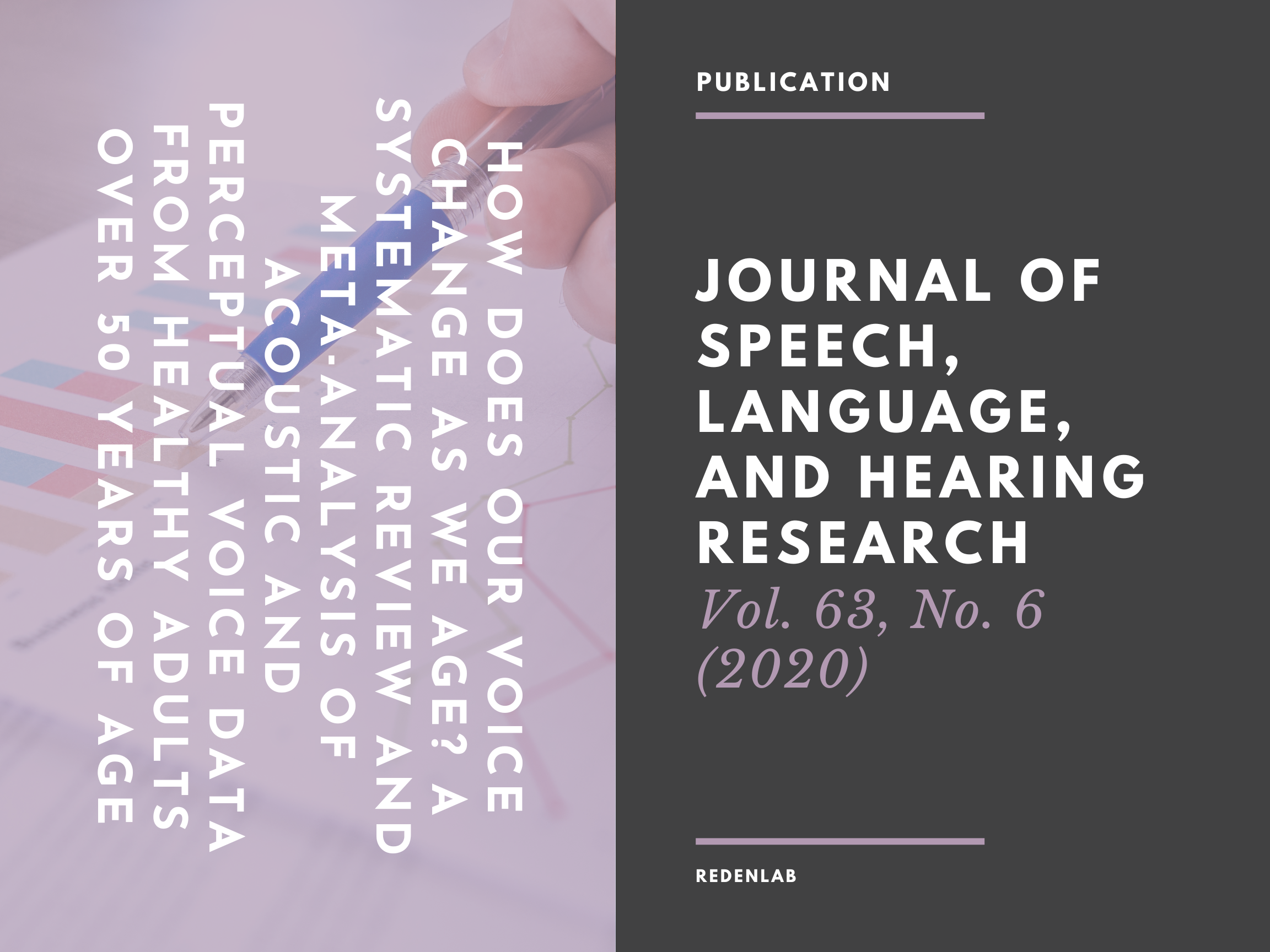How does our voice change as we age? A systematic review and meta-analysis of acoustic and perceptual voice data from healthy adults over 50 years of age

Purpose
Approximately 30% of adults over the age of 50 years present with altered vocal function. Our understanding of how these changes manifest acoustically and perceptually is derived from relatively modest-sized studies using a diversity of tools. Voice changes can arise from the onset of disease or disorder, but also age-related physiological changes, which may not reflect pathology as such. Here, we bring together data on acoustic, perceptual, and instrumental assessments (electroglottography), with the aim of gaining a better understanding of the changes occurring across these measurement domains. We consider these changes in the context of different acoustic features, software programs, and perceptual protocols.
Method
Studies of voice function in healthy older adults over the age of 50 years were sought. Literature was systematically searched with 746 abstracts reviewed. Forty-seven studies were included in the review. A meta-analysis of included studies compared voice acoustic parameters between sex and age. Sixteen acoustic parameters collected from 1,475 participants were analyzed in the meta-analysis. These included some previously unpublished analyses using data provided by authors of included studies.
Results
Data from the systematic review suggest that older individuals are perceived to present with higher overall scores of dysphonia and roughness, breathiness, strain, and instability. Acoustically, males have significantly higher scores on measures of perturbation, including noise-to-harmonic ratio and absolute jitter. The meta-analysis outcomes suggest that participants aged 80–89 years produce significantly higher fundamental frequency, jitter percent, shimmer percent, and shimmer in decibels compared to participants aged 60–69 years and a significant increase in relative average perturbation, jitter percent, and shimmer in decibels compared to participants aged 70–79 years. Limited data were available comparing acoustic measures using the same acoustic software.
Conclusions
Variations in fundamental frequency and frequency and amplitude perturbation increase as healthy adults age. It was difficult to draw definitive conclusions based on existing literature due to variability in hardware used, limited descriptions of study cohorts, or missing data from statistical analysis.
Click here for more details
